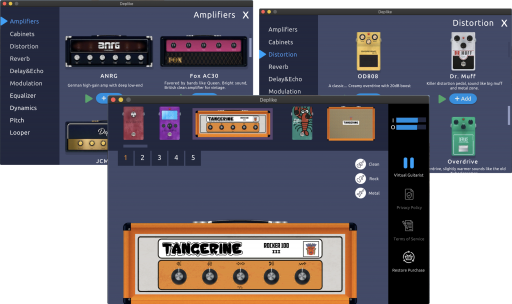How To Hold a Guitar Correctly?
If you’re interested in learning to play the guitar, you might start by taking guitar lessons. You might also start by studying music theory or learning how to play specific chords. Aside from learning how to play, there’s also a vital part of playing that you shouldn’t neglect. One of the essential parts of playing the guitar is learning how to hold a guitar properly.
Although it may seem like a simple task, proper holding the guitar is very important to avoid getting injured while playing. Doing so will allow you to feel more comfortable while playing. There are a few steps that you should follow to improve skills about how to hold a guitar.
Like walking before you run, learning to hold the guitar properly will allow you to improve your skills and build the confidence necessary to play confidently. Having the proper technique and holding the guitar will also help you develop the fundamental skills needed to play properly, whether you play electric, acoustic, or bass guitar.
1. Sitting Position
When it comes to holding a guitar, you must maintain a proper posture. Doing so will help prevent strain on your body and keep you comfortable. However, it can be hard to hold this position when moving into a sitting position.
When it comes to playing the guitar, there are various ways to hold it. For instance, if you’re a casual player, you can usually hold the instrument on your lap and rest it across both legs. On the other hand, if you’re a classical musician, you can usually rest it across just one leg.
One of the most important things to keep in mind when holding a guitar is to keep your back straight. Doing so will prevent you from hunching forward and eventually developing neck and back strain.
While it’s helpful to have a guitar strap to keep the instrument in place while sitting, make sure that you don’t slouch while doing so. Having a chair with armrests can also help, but ensure that you’re not slouching while holding the instrument.
Using a Footstool
It can be hard to hold the guitar while keeping your back straight and your leg up, especially if it’s a heavy instrument. In some cases, a footstool can help keep the leg up while keeping the back of the guitar straight. It can also be helpful for guitar players who tend to use the guitar pick more often.
For electric guitar players, the footstool can help them play their instruments more easily. It can also give them more access to the strings, which can help them perform their solo.
Getting a step or a stool can also help bring the guitar closer to you, making it more comfortable to play. You can usually find these at your local music store for around $15 to $20.
When playing for extended periods, a footstool can help boost the leg a bit. It can also help keep the guitar in a solid position. One of the most common mistakes that new players make is that they tend to hunch over the guitar.
They can also use the footstool to check their fingers’ handling of the strings. It’s important to make sure that the guitar is upright to follow properly to their body.
2. Standing Position
Do you know how to hold a guitar while playing on stage or standing? When you’re playing the guitar, you’ll most likely need a guitar strap to support your back and neck while holding the guitar. An electric guitar is more lightweight than an acoustic, so it is a good idea to have one if you’re going to be playing for a long time. However, it’s also important to note that carrying one can be very cumbersome, especially if you’re away from home.
If you’re playing in a band, make sure you give yourself enough time to rest. For instance, if you’re playing in one position for a long time, make sure that you sit down and stretch. Doing so will help keep your muscles from stiffening up. You can also perform light exercises to work out the muscles between sets.
Although guitar straps are generally cheap, they can also be expensive. If you’re planning on performing, a good guitar strap should be purchased. There are also various types of DIY guitar straps available. Before you start playing, make sure that you practice standing. This will allow you to get used to the feeling and improve your posture. You may also want to practice sitting in addition to standing.
3. Holding the Neck
Getting the proper hand positioning is very important when it comes to playing the guitar. Doing so will make playing chords much easier. Getting the proper grip on the guitar neck will allow you to easily manoeuvre around the instrument. It will also reduce hand fatigue and prevent you from getting injured.
It’s also important to learn how to hold a guitar neck properly when you’re starting to improve. Doing so will allow you to easily come up with the basic notes of a song. One of the easiest ways to do this is to have your thumb placed in the middle of the neck.
There are also various ways to adjust the position of the thumb on the guitar neck to accommodate different playing styles. For instance, if you have a lot of strings, you can wrap your thumb around the top of the fretboard to create more leverage.
To start, place your thumb in the middle of the neck. Experiment with different positions and materials to find the best grip for you. The thickness of the neck, the finish of the instrument, and how it is made all affect how you hold the guitar.
4. Tension and Hand Position
It is very important to know how to hold a guitar relaxed and loose mindset while playing. Even if you are playing something hard, don’t get too tensed up. If you notice that your arm, wrist, or other parts of your body are getting tensed up, it’s important to look at what you are doing.
Getting used to relaxing your muscles while playing will be hard at first. However, eventually, it will become very comfortable. Most of the time, great guitarists can make even the most complex parts of their playing look easy because they are always loose.
Left-Hand Positioning
The thumb of your guitar’s fretting hand should rest between the first and second fingers. Make sure to bend all of your knuckles. Press down the strings as close to the fret as possible. Keep your fingers short, so they don’t touch the fretboard while holding guitar reference.
While holding the guitar, extend the left hand and form a loose fist. Make sure that the thumb is between the first and second fingers. This ensures that you’re using your fingertips to play each note. If your fingers get stuck in the strings, this can cause them to be mute, preventing you from properly playing each note. To avoid this, use the tip of your finger to move the strings down.
Trim the fingernails to avoid touching the fretboard. Doing so will help you exert pressure on the strings while playing. Also, make sure that you’re not pressing too hard on the fret. To avoid exerting too much force on the strings, place your finger on the end of the fret instead of the middle. Doing so will allow the note to ring without requiring effort.
Right-Hand Positioning
You can easily place your right hand on the top portion of the guitar by resting it on the upper arm and keeping it in close proximity to your body. This allows you to pull the instrument close and relax your wrist, arm, and hand.
Resting your right arm on the top portion of the guitar allows it to easily float over the soundhole. This is ideal for both electric and acoustic instruments.
On an electric guitar, you can experiment with where you strum the strings relative to the various pickups. Doing so will help you get the most out of the instrument and improve the tone.
This is also a common mistake that many new players make when playing fast. They tend to bend their elbow and stiffen their forearm when they’re playing fast. Doing so could also lead to fatigue and injury.
Strumming Technique
We know how to hold a guitar and use right and left hands, right? Now, the strumming technique is commonly used for rhythm guitar. It helps provide good support for your finger. You can also bend your middle and pinky fingers slightly to provide more natural support.
After strumming against all the strings, up strum with the thumb of your instrument. You can also play this technique with both your index and thumb. This allows you to create a more tender sound.
5. How to Hold a Guitar Pick?
One of the most important things that a new guitarist should learn right away is the proper pick-hold. Doing so will help avoid getting stuck in the wrong position and potentially causing pain. Getting the know-how to hold a guitar pick the right way is easy, and it will allow you to improve your technique later on. Before starting, make sure that you have the right pick on hand.
You should also consider the weight and thickness of the pick when it comes to choosing a guitar pick. Various brands can be used for different types of guitars. Generally, for beginners, a lighter weight pick is ideal for strumming and basic riffs. For experienced players, a heavier pick is great for playing multiple leads.
When buying guitar picks, make sure that you buy in bulk. This will allow you to keep track of all the items you need and avoid running back to the store in a couple of days. Another thing to consider is choosing colourful picks so they can be easily spotted in case you accidentally drop one.
Hold a Guitar Pick with Either Hand
If you are a right-handed person, holding a guitar pick in your right hand will be the best for you. Before you pick up your instrument, take a moment to relax and shake out your right hand.
Take a deep breath and place your thumb on the surface of your instrument. Then, slide your pick between the middle finger and the thumb. Your thumb should be facing you. Keep a relaxed grip on your pick.
You want to leave around a half-inch of your pick exposed. If you’re playing with a guitar, leave a more significant portion of your pick exposed. If you’re playing with a pick for accuracy, allow a smaller tip to stick out.
6. How to Hold a Bass Guitar?
Although bass guitars are longer than other instruments, such as electric and classical, they do not have to be held differently.
Wearing a strap is also important when playing bass. It helps keep the instrument’s weight and makes it easier to balance.
Instead, try resting your right leg on a box or a footrest to help bring the bass closer to you.
It is generally recommended to hold the bass slightly higher when standing. This allows you to easily navigate the long neck of the instrument.
Keep in mind that while playing bass, keep your back straight and shoulders relaxed. Doing so will help improve the tone and feel of the instrument.
Conclusion
Proper positioning is crucial for learning how to hold a guitar and how to hold a bass guitar . Having the right position can make a huge difference in how quickly you can learn and how comfortable you are.
Proper posture can also help keep you from getting too tense during a session. It allows you to hold the guitar in a natural way for your hand movement. There are various ways to hold the guitar, depending on the playing style.
Having the proper seat and posture can also help you hold the guitar correctly. An armless chair can also help you maintain the proper posture.
Now, how to get the guitar tone you want?
Advancing your way throughout the guitar journey is a wholistic process which includes two main pillars: 1. Improving your playing skills; 2. Tweaking the guitar effects and amps to shape your guitar sound.
We all have a guitarist idol that we dig the sound of, right?
Getting the guitar sound of your favorite guitarists/band can be very costly and frustrating. It can require years of expertise to achieve your desired guitar tone.
Don’t worry, you don’t actually have to spend that much money and effort to get any guitar tone you want. Deplike Guitar FX Amp Sim suite plug-in got you covered on all Windows, macOS, iOS and Android devices. All you have to do is plug your guitar and play!





